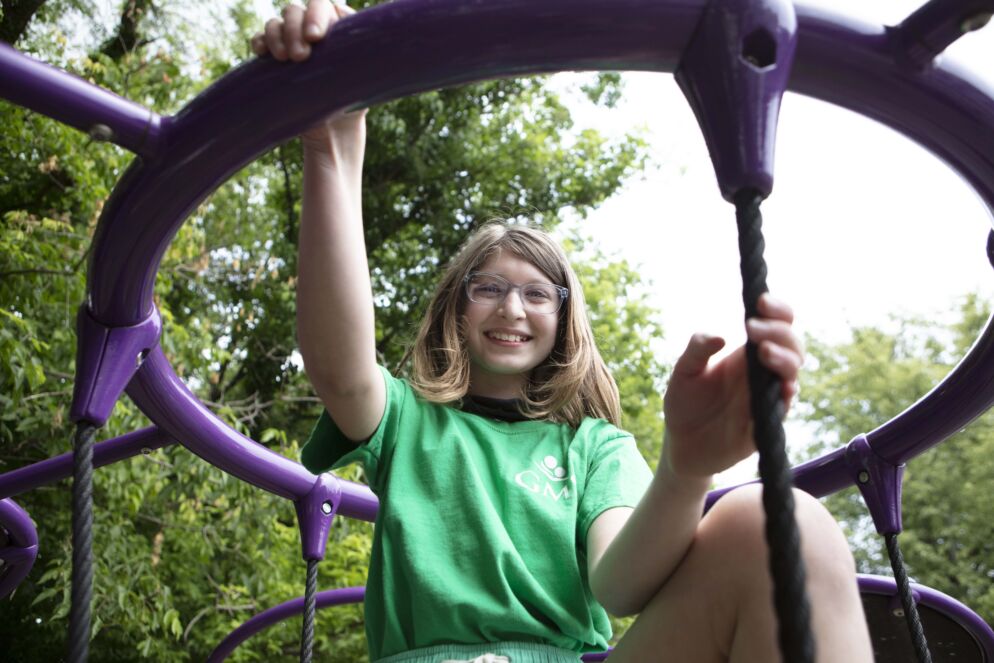
When it comes to education, there is no “one size fits all” option. Every school is different, and the variations between them can be vast.
Choosing the right school to meet your child’s needs can be a serious—and sometimes daunting—endeavor. For parents considering private schools, there are a lot of options. We spoke to three different types of schools to get a closer look at local private school models, their prices and their values.
Independent Schools
Independent schools are a type of private school—meaning they do not receive public funding from the state government. The difference between an independent school and other private schools is that independent schools are overseen by a board.
GreenMount School | Co-Ed Independent School
GreenMount School (GMS), in Wyman Park, Baltimore, has a unique origin. It was founded in 1993 by a six-parent co-op in a church basement. Today, the school serves grades K-8 with themed studies, which allow students to learn where their curiosity takes them, according to Liana Casbarro, the school’s academic facilitator. Class sizes are small, with only about 12 students per class.
The Mission
“We kind of arose out of this home-school model, and many of those values are still very much part of the school,” Casbarro says.
Those values are represented by hands-on learning, being involved in the community through volunteer work and field trips and a focus on individual student interests. GMS encourages strong family participation through required volunteer time, though parents who don’t have time are able to support the school in other ways.
The Curriculum
According to Casbarro, the curriculum is more standardized than Montessori programs (Montessori is another private school model, focusing on independent, student-led learning) but focuses on getting students engaged and finding their individual learning pathways.
“Students really understand their role in their community,” Casbarro says.
For example, on a field trip to the Eastern Shore, students study the ecosystem and learn about how it is connected to the food chain in Baltimore, the climate, climate change and sustainability, and that their choices have an impact.
College Prep
Like other independent schools, those that specialize in college prep are also overseen by a board, however, they are designed to have a greater focus on preparing students for higher education.
Roland Park Country School | Independent All-Girls College Preparatory School
Roland Park Country School (RCPS) in Baltimore serves girls from kindergarten through grade 12. The school champions teamwork and community in every aspect, from how students are learning to the school’s collaboration with other area schools. Its student-to-teacher ratio is 9:1.
The Mission
Lindsay Sisson, RPCS’s director of enrollment management, says that the school’s goal is to provide an environment where students feel seen, known and heard. The goal is to expose its students to a wide variety of academic and co-curricular programming to give them time and space to identify and pursue their individual passions as they prepare for college and beyond.
RCPS also offers an advantage to students as a single-sex independent school.
“At RCPS, the benefits of the all-girls advantage is really driven by the sense that girls and young women occupy every leadership position here, so we are able to distill what ultimately becomes gendered stereotypes about things like leadership and what it means to be smart or brilliant—things that over time young people begin to associate as words and qualities that are more dominated by men,” Sisson explains.
The Curriculum
The curriculum at RPCS is focused on the student’s academic journey. It’s designed around demonstrations of academic mastery rather than “rote” memorization, Sisson says.
“We’re not stressing our students out, but we are constantly expecting them to elevate their performance in the classroom,” Sisson says.
Experiential programming is another focus of RPCS’s curriculum. That means giving students real-world opportunities to apply what they’ve learned in class.
Two types of classes at RCPS that are not typically offered at every school are leadership and entrepreneurship. In these classes, Sisson says, students learn about ethics and public speaking. Students can also learn about the stock market and investments—and invest $5,000 of the school’s endowment into a portfolio RPCS students make.
RPCS students are also able to take classes at Bryn Mawr or Gilman as part of a coordination effort with the twonearby schools.
Religious Schools
Religious private schools typically differ from public and other non-public schools by having teachings that include faith alongside a typical curriculum.
St. Michael-St. Clement | Private Catholic School
St. Michael-St. Clement School in Overlea serves kids Pre-K3 through grade 8. The school is science, technology, engineering and math (STEM)-focused and facilitates learning with technology and small class sizes. Its ratio of faculty to students is 1:15.
The Mission
Principal Matt Zipp is a relatively new part of the school’s team. This school year is his first at the helm of St. Michael-St. Clement. Formerly, he was a teacher and administrator in Anne Arundel County for a decade.
“We believe that all kids are capable of success. We preach that all students can be successful in every outlook and every matter of life,” Zipp says. “St. Michaels – St. Clement is a place where faith soars, minds excel and futures ignite.”
But it’s not just for Catholic students.
“We’re a unique Catholic school because we’re extremely diverse,” Zipp says. “We see a lot of our non-Catholic students coming from the city — their parents are looking for a better [educational] opportunity.”
According to Zipp, the school draws students from 35 different zip codes.
The Curriculum
“Everything lines up with the Maryland State curriculum. It’s pretty much a mirror to what a public school curriculum will look like,” Zipp says.
The only thing that separates the curriculum from that of a public school is the Catholic religion class, which is the archdiocese’s curriculum, according to Zipp.
As a Catholic institution, students are also invited to pray daily at the end of the day and attend the weekly mass.
The school’s STEAM-focused programming (denoting arts with STEM) has given the school a reputation for being pretty “tech savvy,” Zipp says. Students have a tech teacher, a tech class, Chromebooks and access to 3-D printers.
Tuition
According to Private School Review, for the 2023-24 school year, the average tuition cost for private schools in Maryland is $14,227 and the average for Baltimore County private schools is $13,244.
While tuition can fluctuate a bit from year to year, annual tuition at GreenMount School in 2023-24 is $14,580. RCPS tuition for the current school year is between $25,900 and $37,000, depending on the age and program your child is enrolled in.
Financial aid is available for both schools. RPCS reports that it reduces tuition fees for more than one-third of its students.
The average tuition cost at St. Michaels-St. Clement for one year is around $7,500, Zipp says. Families can take advantage of grants and funding they can apply for through the archdiocese if they need financial aid to attend. There is also a discounted rate for Catholic students.









